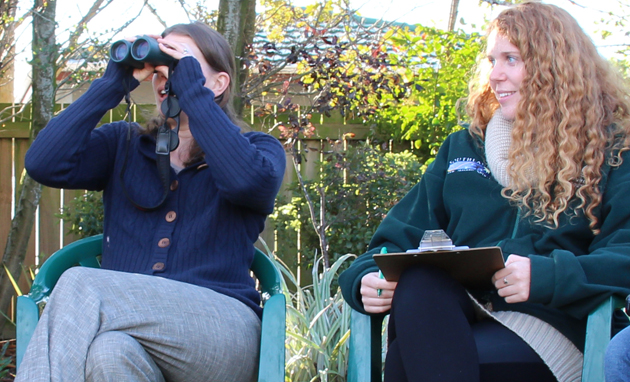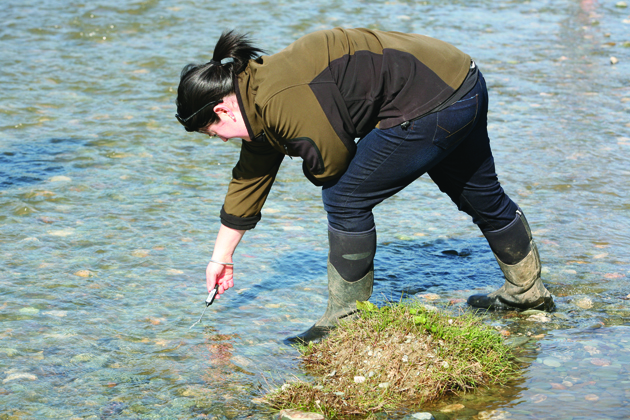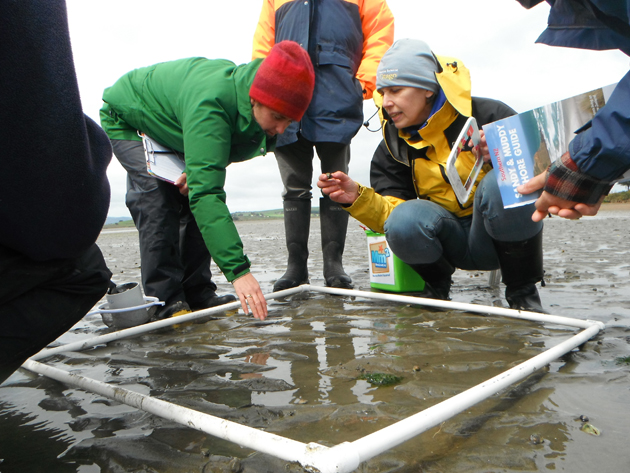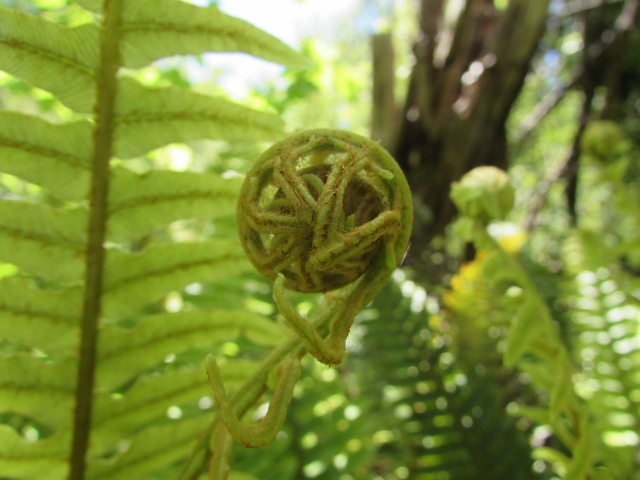Community environmental monitoring
You don't have to be a scientist to get involved in science. Every day, people of all ages and backgrounds carry out monitoring that helps them understand what's happening in their environment.

From counting birds to testing water quality, there are a number of ways you could find out more about your property or catchment. There might already be a project you can join, or you might want to start your own monitoring. This could be anything from sampling water for testing, carrying out a bird count, or using a rain gauge. So if your own monitoring is the way to go, here are a few things to think about.
You can download our Community environmental monitoring factsheet here.
The question
Being clear about what you want to find out is the most important step in designing your own monitoring programme. This will ensure you don't waste time and money on testing or monitoring something that doesn't help answer your question, leads you to draw the wrong conclusion, or is already being monitored or studied. Make sure you do some research around the topic, and get some good advice. Write down what you think the results might be, and why.
The method
Think about your question and what you might need to do. Do you need some expert advice or training? How will you carry out your monitoring? What equipment do you need? Will you monitor once or repeat the monitoring? How often will you monitor? Are there different options and what do they cost?
For example, if you are monitoring water quality you might need a test kit, and the samples will need to be sent away for analysis. If you want to look at bank erosion, you might want to take photos over a certain period of time. If you are using a rain gauge, you will want to make sure it is in the right spot so your results are accurate.
It's important to note that data collected for a council to use as part of its research needs to meet strict standards and criteria. Consider what data you want to collect and how it will be used, then select the methods appropriate for this.
The results
Once you have some results, you can reflect on what they mean, and continue to seek out help and compare these with the results of others in your community. You might, for example, have more birds on your property than your neighbour. Why? What can be learned? Was anything surprising or curious and do you need to do some more monitoring? Sometimes long-term monitoring that continues for years can be very helpful to track trends and variability within the environment.
Projects & tools you can use on your patch
Freshwater

- E coli and nitrate home test kits: Check the e coli levels in waterways on different parts of your farm. Contact NIWA for more information: www.niwa.co.nz
- Hand held water meters: These can be purchased online to help measure stream flows and temperatures
- SHMAK: How healthy is your stream? The New Zealand Stream Health Monitoring and Assessment Kit has been designed to help you find out. See www.niwa.co.nz
- The SHMAK Freshwater Invertebrate Identification Guide: See www.niwa.co.nz
- Restoration Indicator Toolkit: This guidebook helps users design a monitoring programme to track stream restoration progress. See www.niwa.co.nz
- The Cultural Health Index: This enables a better understanding of Māori perspectives and concerns about streams and rivers. Contact your local Rūnanga for more information
- WETMAK: An online resource aimed at community groups working on wetland restoration projects in New Zealand. See www.landcare.org.nz
Coastal

- Marine metre squared: Monitor what is happening at the bottom of your catchment, different plants, animals and changes to your coastline with this survey. See www.mm2.net.nz
Plants

- Freshwater algae monitoring: Helps you or your community group monitor algae which can be linked to habitat or water quality. See: landcareresearch.co.nz
- FORMAK: A kit for land owners and community groups to assess the condition of New Zealand native forest ecosystems. See formak.co.nz
- Bush vitality assessment: A kit to help sustainable land management to restore native bush and maintain its unique biodiversity. See: www.bushvitality.org.nz
Animals

- 5-minute bird counts: The bird count method involves staying still for 5 minutes recording all birds seen or heard. See www.doc.govt.nz
- Foliar Browse Index: Learn to identify and count pest animals such as possums browsing in a forest with this course. Contact www.doc.govt.nz

